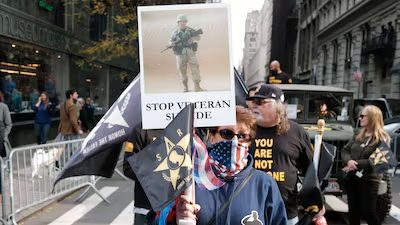
Families of soldiers who died by suicide march during the Veterans Day Parade in New York in November 2021. Getty / AFP
Families of soldiers who died by suicide march during the Veterans Day Parade in New York in November 2021. Getty / AFP
US veteran suicides soared during ‘Global War on Terrorism’ but crisis slowly abating
Many veterans face inner battles when transitioning back into civilian life
